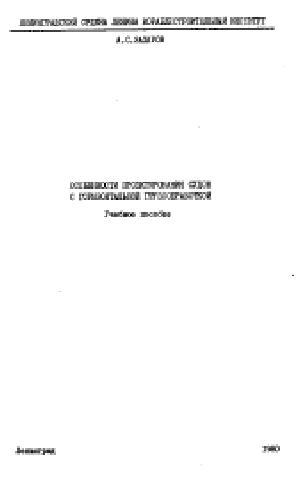- 2 402 202 книги
libcats.org






An Introduction to Twistor Theory (London Mathematical Society Student Texts)
S. A. Huggett, K. P. TodI think this book gives a very good introduction to twistor theory. However, it's not an elementary book. Readers should already be familiar with topology, differential geometry, group theory and general relativity. The book is short, as are the chapters, and it gets to the point quickly. I consider it primarily a math book, but aspects of physics are frequently considered.
After a quick introduction and review of tensors the concept of spinors is introduced. It's the usual approach drawing a correspondence between a vector and a rank (1,1) spinor. In particular between a null vector and the product of a spinor with its own conjugate. This is often informally phrased by saying a spinor is the square root of a vector.
Following this the spinor algebra is developed. At this point it is shown how to formulate tensor algebra in terms of spinors (with some bits of projective geometry thrown in). Although the book is developing the mathematics of spinors some familiarity with physics is required to appreciate all the discussion. Without some background in physics, relativity in particular, the significance of this might be missed. Applications considered include: Einstein's equation, the Weyl tensor, principle null directions and the classification of spacetime, Dirac neutrinos, source free Maxwell equations and congruences of null vectors. I would have like to have seen more discussion about the advantages of the spinor formulation, for example, how it makes classifying algebraically special spacetimes simpler.
Twistors are introduced next, this is about one-third of the way through the book. Although the correspondence between twistor space and null geodesics is considered; the original motivation of twistors, to provide a theory of quantum spacetime, isn't emphasized.
The rest of the book mainly contains chapters explaining various applications of twistor theory. They mostly have very physics sounding names like "The non-linear graviton" or "The twisted photon and Yang-Mills construction". My favorite chapter was the one covering Penrose's quasi-local momentum and quasi-local angular momentum. I may have missed something, but with the exception of this chapter I'm not sure any of the others offered any new insights to the world of physics.
On the whole I thought this was a very good book. I liked the pace and the text was clear. It even includes hints to some of the exercises. However, it does require a bit of background knowledge, I would especially recommend being familiar with topology. Obviously it's not as comprehensive as Penrose and Rindler or Ward and Wells, but it's very good for building a foundation.
After a quick introduction and review of tensors the concept of spinors is introduced. It's the usual approach drawing a correspondence between a vector and a rank (1,1) spinor. In particular between a null vector and the product of a spinor with its own conjugate. This is often informally phrased by saying a spinor is the square root of a vector.
Following this the spinor algebra is developed. At this point it is shown how to formulate tensor algebra in terms of spinors (with some bits of projective geometry thrown in). Although the book is developing the mathematics of spinors some familiarity with physics is required to appreciate all the discussion. Without some background in physics, relativity in particular, the significance of this might be missed. Applications considered include: Einstein's equation, the Weyl tensor, principle null directions and the classification of spacetime, Dirac neutrinos, source free Maxwell equations and congruences of null vectors. I would have like to have seen more discussion about the advantages of the spinor formulation, for example, how it makes classifying algebraically special spacetimes simpler.
Twistors are introduced next, this is about one-third of the way through the book. Although the correspondence between twistor space and null geodesics is considered; the original motivation of twistors, to provide a theory of quantum spacetime, isn't emphasized.
The rest of the book mainly contains chapters explaining various applications of twistor theory. They mostly have very physics sounding names like "The non-linear graviton" or "The twisted photon and Yang-Mills construction". My favorite chapter was the one covering Penrose's quasi-local momentum and quasi-local angular momentum. I may have missed something, but with the exception of this chapter I'm not sure any of the others offered any new insights to the world of physics.
On the whole I thought this was a very good book. I liked the pace and the text was clear. It even includes hints to some of the exercises. However, it does require a bit of background knowledge, I would especially recommend being familiar with topology. Obviously it's not as comprehensive as Penrose and Rindler or Ward and Wells, but it's very good for building a foundation.
Ссылка удалена правообладателем
----
The book removed at the request of the copyright holder.
----
The book removed at the request of the copyright holder.
Популярные книги за неделю:
#2

В.Бекетов, К.Харченко. Измерения и испытания при конструировании и регулировке радиолюбительских антенн (djvu)
4.82 Mb
#4

Самодельные детали для сельского радиоприемника
Авторы: З.Б.Гинзбург, Ф.И.Тарасов.Категория: радиоэлектроника
1.40 Mb
Только что пользователи скачали эти книги:
#4

Анастасия Жаркова. Леонардо да Винчи ("100 человек, которые изменили ход истории") (djvu)
4.98 Mb
#7

Тестирование Дот Ком, или Пособие по жестокому обращению с багами в интернет-стартапах
Роман Савин
5.26 Mb
#8

Особенности проектирования судов с горизонтальной грузообработкой
А.С. Захаров, Учебное пособиеКатегория: 1003605-Судостроение
1.39 Mb
#10

Стратиграфия триасовой системы Северо-Востока Азии
Дагис А.С., Архипов Ю.В., Бычков Ю.М.Категория: Biology, Paleontology
22.19 Mb











